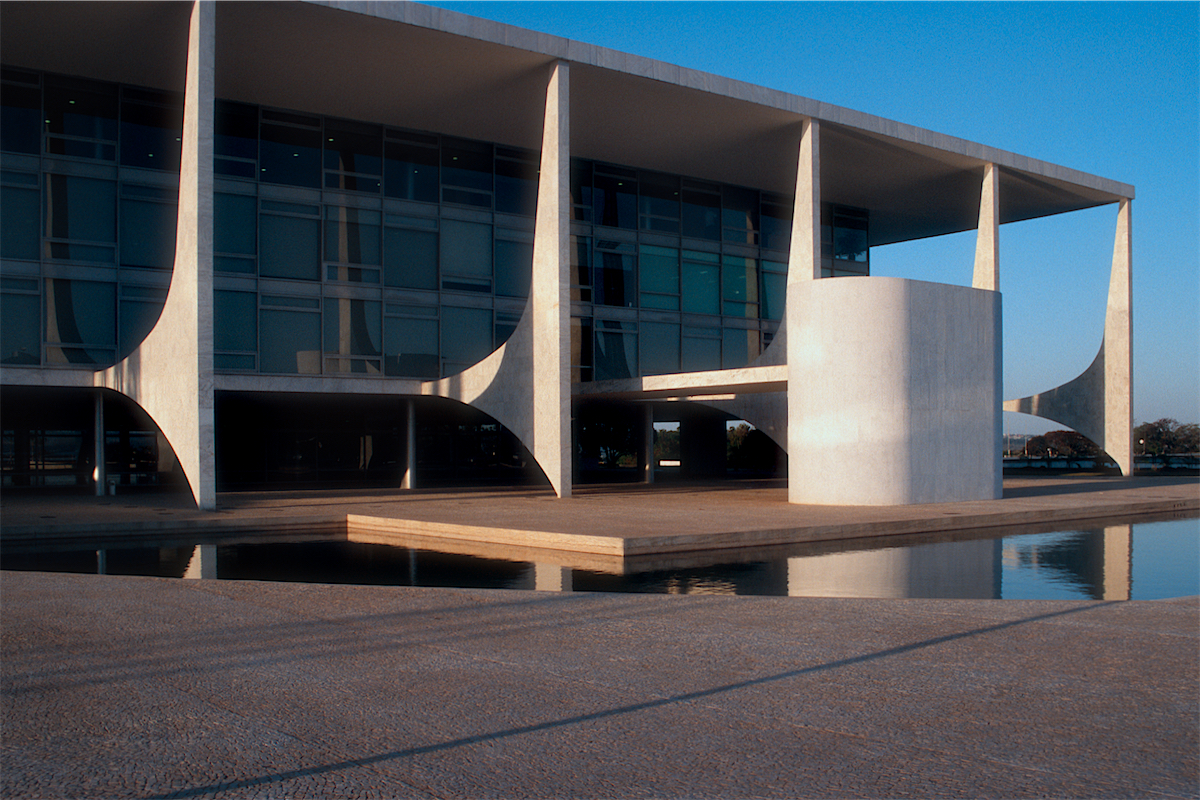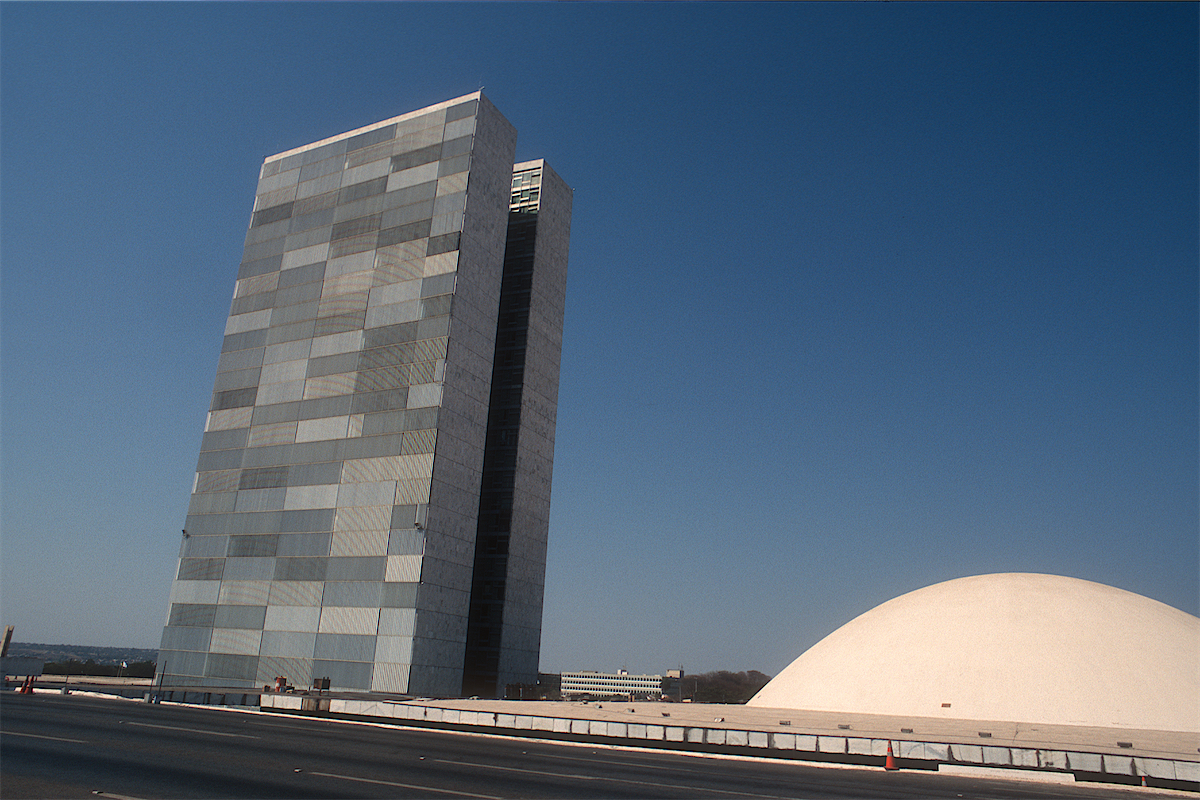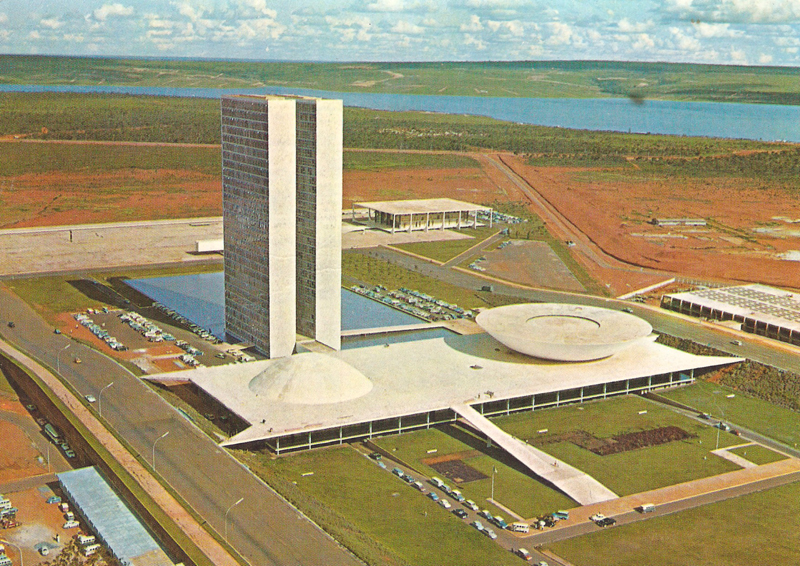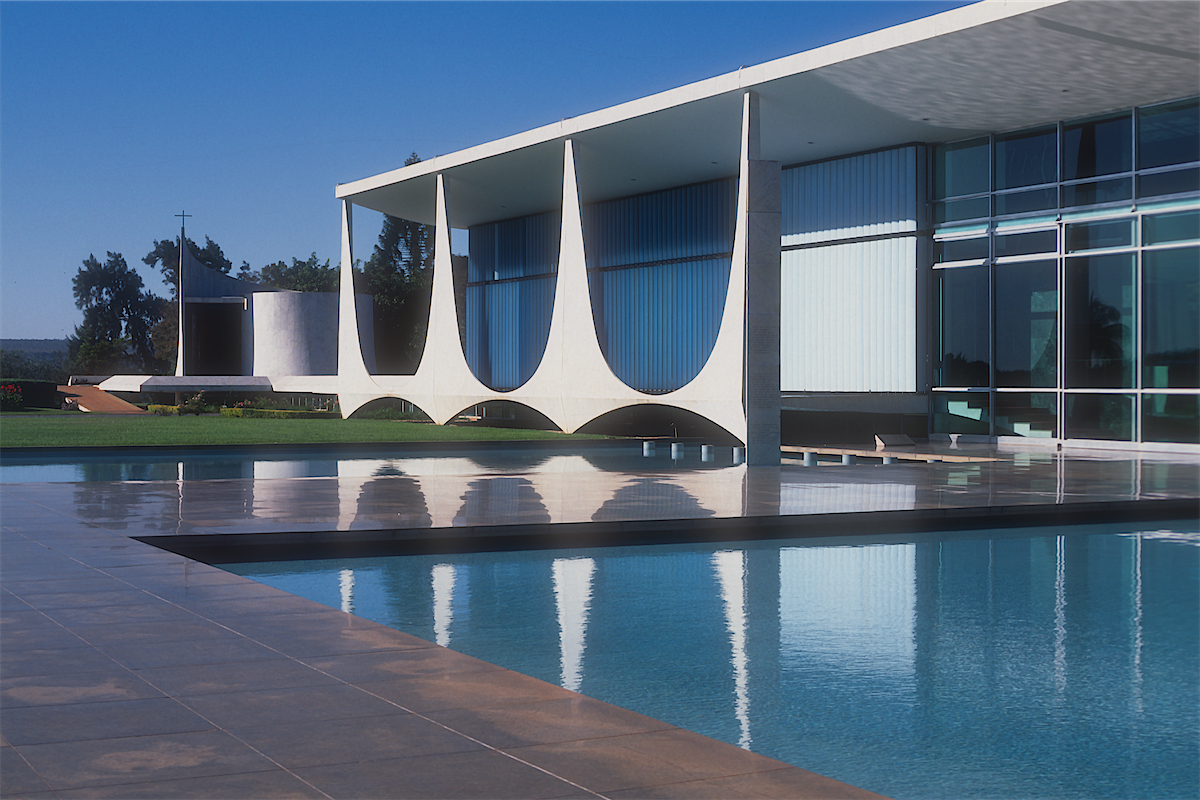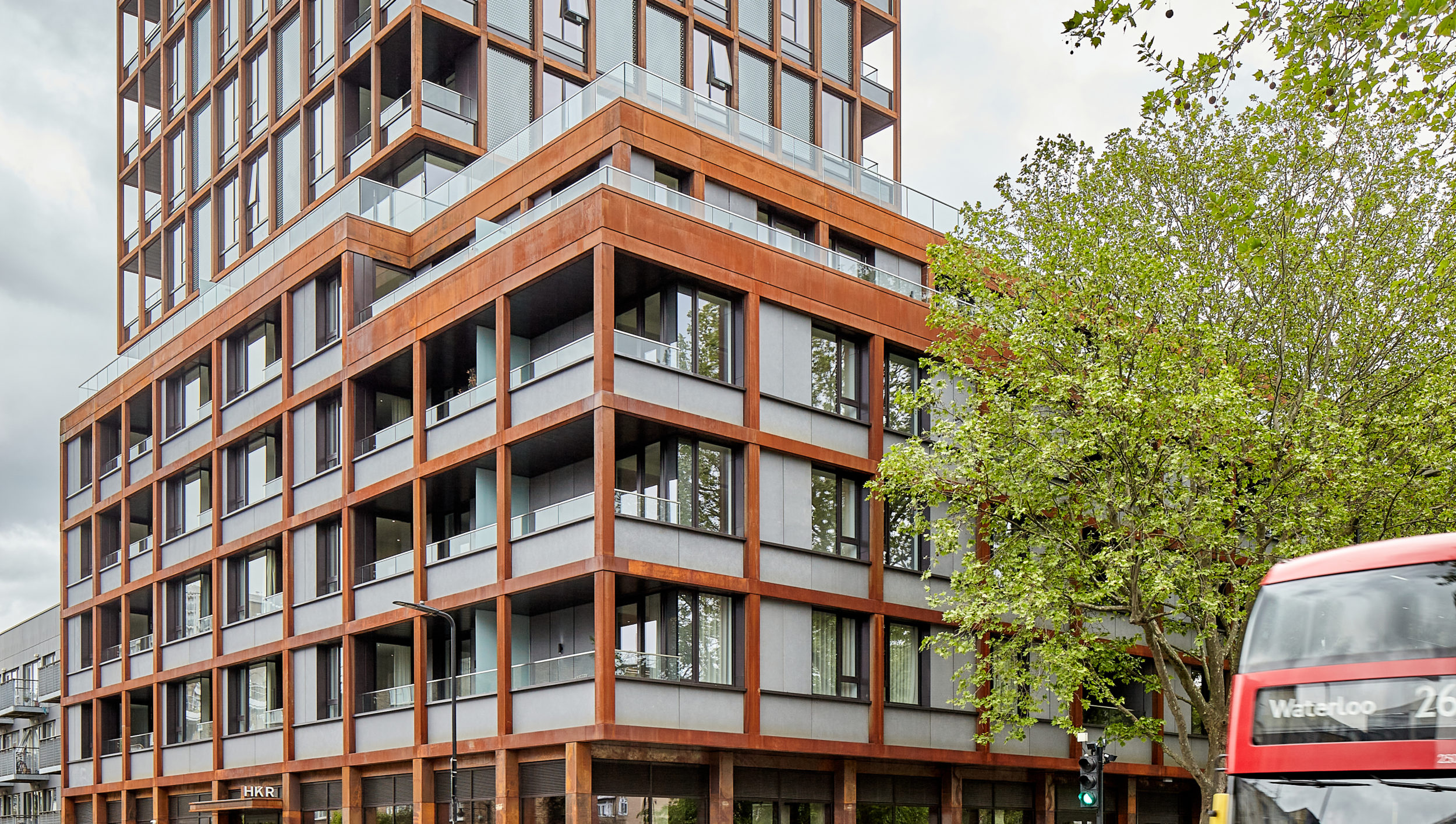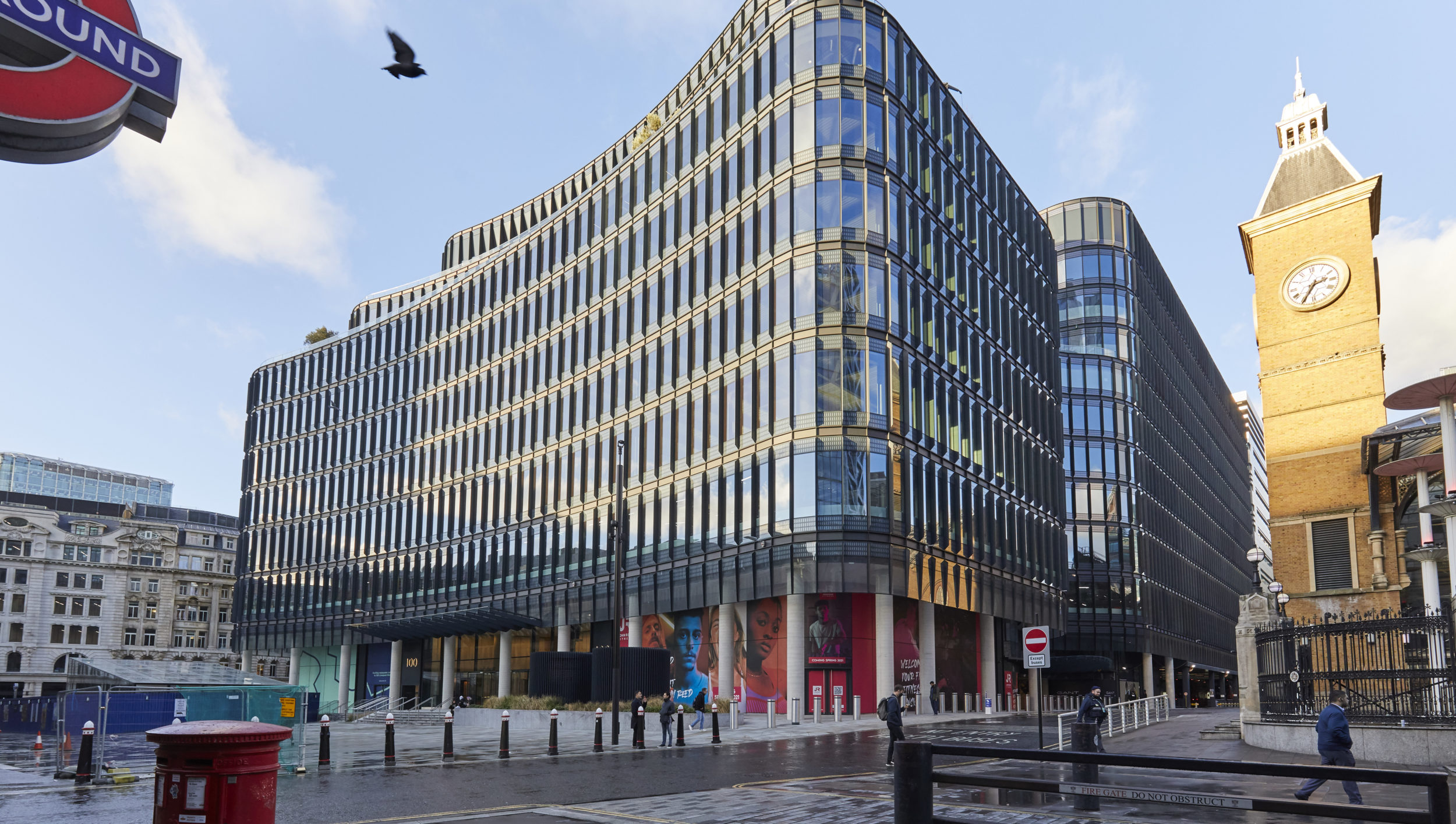Studio Presentation // Brasilia
In a change from our usual studio presentations, we were treated to an in depth and enjoyable lecture by one of our Senior Architects, Thomas Deckker, on the history, design and construction of Brasilia.
The new capital city of Brazil, Brasilia, begun in 1957 and inaugurated in 1960, has attracted both praise and criticism for its supposed connection to European Modern architecture, but the true history of its design and construction is hardly known. The idea for a new capital city in the uninhabited central plateau originated in the founding constitution of Brazil in 1822, but was ignored – understandably, given the cultural, political and economic significance of Rio de Janeiro, let alone the beautiful beaches – until the charismatic and cultured President Juscelino Kubitschek decided to build it during his term of office. Kubitschek had become fascinated with Modern architecture as Mayor of Belo Horizonte: he commissioned Oscar Niemeyer to design a series of iconic buildings around an artificial lake in the garden suburb of Pampulha in 1942. It was a theme he returned to for Brasilia in 1957.
The team of Lucio Costa (urban design), Oscar Niemeyer (architecture) and Roberto Burle Marx (landscape) for Brasilia came together for the first time on the Ministry of Education Building, Rio de Janeiro in 1936. The three young designers – it was their first building – brought forward an internationally recognised masterpiece. Their careers continued to intertwine, next on the Brazilian Pavilion at the New Yorks Worlds Fair 1939, where they became friends with the American architects Wallace K. Harrison and Eero Saarinen who were working on the Fair. Harrison invited Niemeyer, after the Second World War, to be part of the design team for the United Nations Headquarters in New York City; Niemeyer made the final conceptual design later executed by Harrison.
The most popular building at the New Yorks Worlds Fair 1939 was Futurama, a private pavilion belonging to the General Motors Corporation — it was reported that people queued for hours to see a vision of the future they knew had already been achieved. It showcased the amazing technological development that had taken place in the United States under the New Deal of President Franklin D. Roosevelt. The future city that was the centrepiece of Futurama — ironically projected as 1960, the year Brasilia was inaugurated — showed a relatively dense mixture of apartment buildings and private houses, quite unlike the formless low-density suburbs that developed after the War, organised around an enormous road system. General Motors was in the business, after all, of selling cars.
Roosevelt’s New Deal began a period that became known as managerial capitalism, in which governments and businesses were run by a technocratic managerial class isolated from what were seen as the distractions of urban life. It was extremely successful and made the United States a model for developing countries: it inspired the Estado Novo, or New State, in Brazil, which was not overturned until the military coup in 1964. General Motors was at the forefront of this: as part of their very substantial war effort they commissioned Eero Saarinen to design a beautiful management centre in the prairies of Warren, Michigan, far from Detroit where production actually occurred. The pinnacle of General Motors’s success came in 1956, when the centre was inaugurated by President Dwight D. Eisenhower. A few days later Eisenhower signed the Federal-Aid Highway Act that established the enormous road system predicted in Futurama.
The competition for Brasilia, at the end of 1956, came when managerial capitalism, and highways, were seen as absolutely unchallenged directions for the future of government and business. Brasilia was intended to be a rural idyll, far from the pleasures and temptations of Rio, for a small group of elite political managers. This did not end well, for either General Motors or Brazil. General Motors drifted into bankruptcy and international irrelevance specifically because managers were separated from the messy realities of production and urban life, and Brazil suffered a military coup. The publication of ‘The Death and Life of Great American Cities: The Failure of Town Planning’ by Jane Jacobs in 1961 signalled a new understanding of urban politics and economics.
Brasilia was regarded, rightly, as an astonishing accomplishment when it was inaugurated in 1960. The next president, unfortunately, sacked Costa, Niemeyer and Burle Marx and construction drifted to a halt when only about one-twentieth of the city was actually built. A sad and chaotic period ensued until the equally charismatic and cultured Fernando Henrique Cardoso became President in 1985 and the city was listed as a UNESCO World Heritage Site in 1987. Since then, its structure preserved, it has undergone several stages of renovation and is now the centre of a very prosperous metropolitan region of about 3 1/2 million inhabitants, a true city.
Brasilia was intimately bound up in the political theory of management which brought unparalleled success to the United States in general, and General Motors in particular, in the 1940s and 1950s. We can now recognise the success of the urban plan, the brilliant buildings and wonderful landscapes without in any way seeing them as uncritical models for the future development of the city. The inhabitants would certainly agree: it is one of the fastest growing cities in Brazil, and has developed a culture unique to its high, dry and isolated plateau.
Thomas Deckker is Senior Architect at Veretec. He is also a Fellow of the Geddes Institute of Urban Design at the University of Dundee, a visiting researcher at the Brazil Institute, King’s College London, and a member of the research steering committee of the School of Architecture at the Royal College of Art, London.
